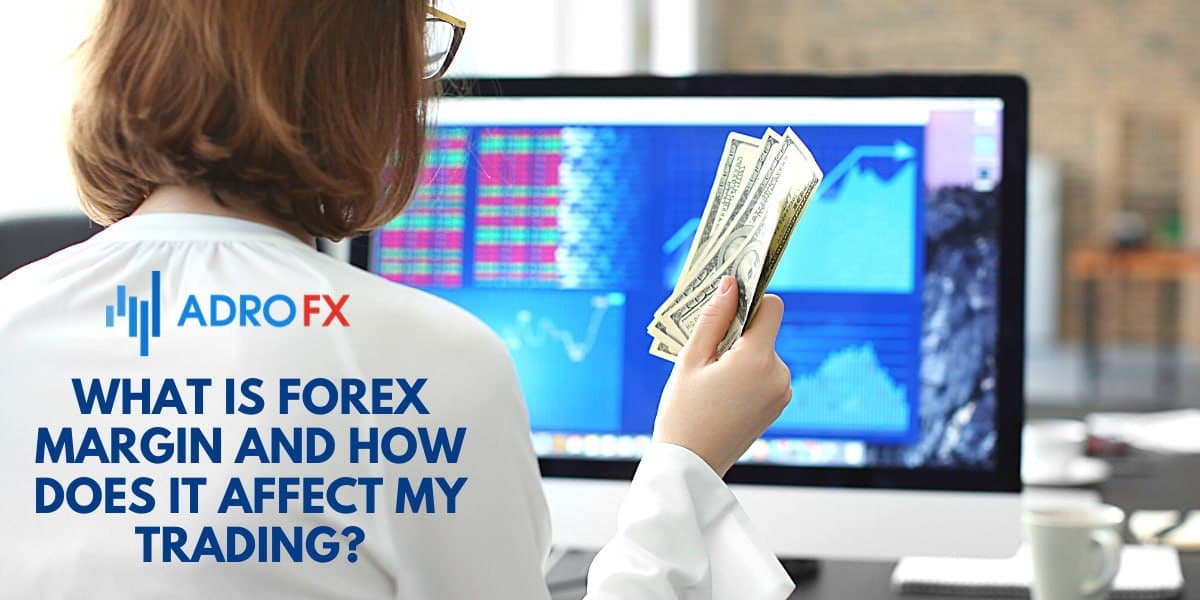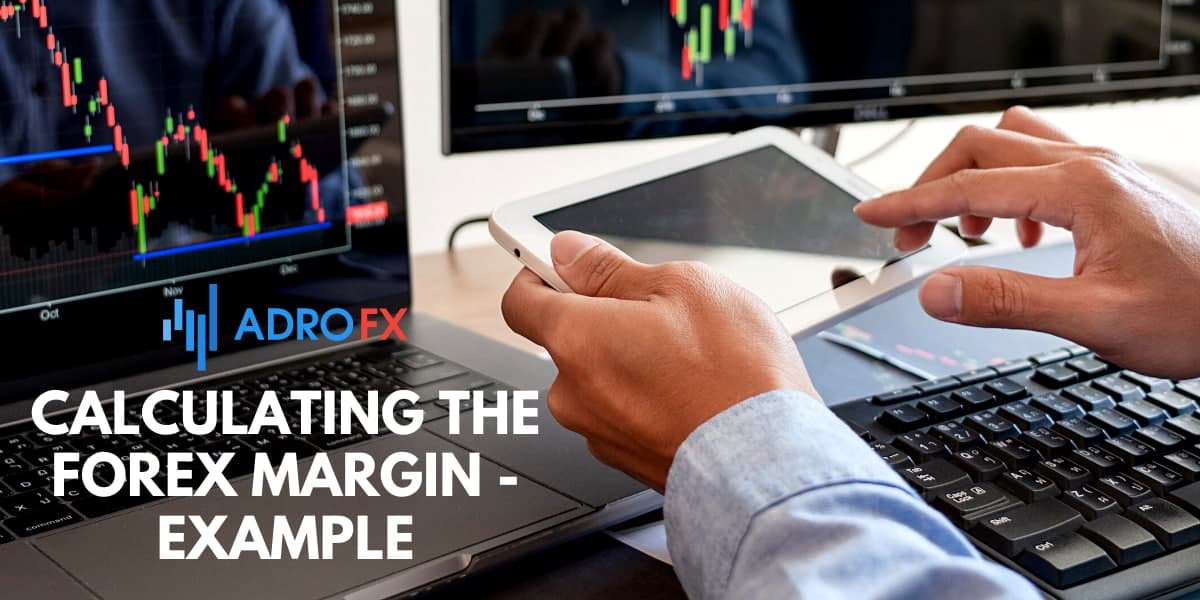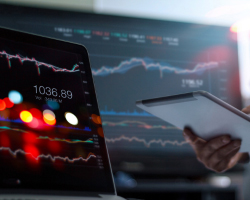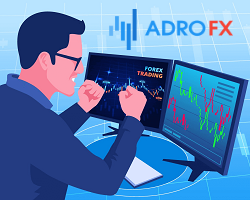What Is Forex Margin and How Does It Affect My Trading?

One of the benefits of forex trading, besides low capital entry requirements, is margin in forex. Before using it correctly, traders must understand what forex margin is. Many do not learn how it affects their trading, and they only pay attention to the benefits while ignoring the risks associated with it. Learning how to use this trading tool will help traders avoid losses and blown trading accounts. Using margin correctly does provide a notable increase in trading performance. This post will cover “forex what is margin,” give examples of how to calculate it and help you understand how to use it.
What Is Forex Margin and How Does It Affect My Trading?
Forex margins refer to the amount of capital a trader needs to have to open a position. When trading forex, it is unnecessary to pay the entire trade value, only a fraction of it, known as margin. The levels differ depending on the asset, with the most liquid currency pairs having the lowest margin levels. The best forex brokers offer the EUR/USD, the USD/JPY, the GBP/USD, the EUR/JPY, the USD/CHF, and the EUR/GBP for a margin level of 0.002%. It equals leverage of 1:500.
With margins in forex, traders can control a significantly larger trade size. Since currency pairs move in small percentage increments, traders can earn more gain per trade. What many ignore is that it also magnifies the downside potential. A broker is willing to lend capital to traders for a daily financing cost known as swap rates. Traders must also understand that the broker takes no risks when lending and automatically closes trades if the account balance falls below a specified threshold. It is known as a margin closeout level.
The trading platform displays the following:
- Balance - The total account balance
- Equity - The total account balance plus or minus all trading earnings or losses
- Margin - The capital used to open all trading positions
- Free Margin - The available cash to open additional trading positions
- Margin Level - The margin level is essential for risk management and determines when the broker closes all open positions
What Does Margin Mean?
Margin describes the cash needed to open trades. The lower the margin requirement, the less capital a trader must maintain. Margin requirements depend on the liquidity, with brokers increasing it for less liquid assets, for example, the USD/PLN, or for highly volatile assets like the BTC/USD. Before using margin, traders must consider the downside, as it is a double-edged sword. Trading with insufficient funds usually leads to total losses. Many traders operate micro-portfolios with less than $1,000, overtrade, and ignore risk management. It is a guaranteed formula to generate losses. Understanding how to use risk management is one of the priorities before using margin in forex.
Calculating the Forex Margin - Example

Answering the question “what is margin in forex?” is best done via an example. We will use the EUR/USD with a margin requirement of 0.002% or leverage of 1:500 versus the EUR/USD with a margin requirement of 100% or no leverage.
A 1.0 standard lot position in the EUR/USD with a margin requirement of 100% or no leverage:
Price 1.2000 x 100,000 (1.0 standard lot equals 100,000 currency units) = $120,000
A forex trader opening the above position would require $120,000 to open the trade, making retail forex trading impossible and forex trading, in general, an unattractive asset class.
A 1.0 standard lot position in the EUR/USD with a margin requirement of 0.002% or 1:500 leverage:
Price 1.2000 x 100,000 (1.0 standard lot equals 100,000 currency units) x 0.002% = $240
Margins in forex allow traders to open the same position for $240. It does not mean that a trader should only have $240 in their trading account. At this point, risk management becomes a factor. Conservative traders should not place more than 2% of their balance into any one position, while aggressive traders may go as high as 5%. Putting it into a more comprehensible perspective, conservative traders should have a $12,000 ($240 x 50) portfolio and an aggressive trader no less than $4,800 ($240 x 20).
Traders may also use a reverse approach to determine their maximum lot size. For example, a conservative trader with a $500 portfolio can take a maximum EUR/USD position, as used in our calculations here, of 0.05 lots.
Here is the math:
$500 / 50 = $10 (it represents 2% of the balance and the maximum margin requirement)
$10 (the maximum margin requirement) / 0.002 (if traders use 1:500 leverage) = 5,000 currency units or 0.05 lots
Another thing to remember is the pip value, which for a 1.0 standard lot is $10 in the EUR/USD if the account currency is in US Dollars. A 100 pips move in price action equals $1,000, and even for a conservative trader from a $12,000 account, using the data in our example, it resembles a significant move.
Forex Margin Calculator
While traders should know how to do the math, most forex brokers provide a margin calculator. Using the above example, traders can select the currency pair (EUR/USD), the account base currency (US Dollars), the lot size (0.05 lots), and the margin requirement in percent (0.002%) or the leverage (1:500). The calculator will give the margin requirement in currency units ($10).
What is Free Margin?
Free margin is the amount traders have available in their portfolio to open new positions. It is calculated by subtracting the current margin from the account equity. If traders already have positions, the equity will constantly move, and so will the free margin. Successful traders will increase their trading power, or the amount they can trade, while those facing losses will also experience a decrease in their free margin level.
Free Margin Example
Using our previous example of a trader with $500. Opening the 0.05 lots EUR/USD position at 1.2000 with a margin requirement of 0.002% or leverage of 1:500 results in a $10 margin requirement, listed in the trading platform simply as margin.
Free margin after taking the trade (for simplicity we do not consider spreads and commissions):
$500 (equity) - $10 (margin requirement) = $490
Free margin following a $50 floating yield:
$550 (equity) - $10 (margin requirement) = $540
Free margin following a $50 floating loss:
$450 (equity) - $10 (margin requirement) = $440
The more positions a trader opens, the higher the margin requirement and the lower the free margin. Traders must use proper risk management to ensure they do not overtrade, as it can result in margin calls. A margin call requires the trader to add funds to the portfolio, or the broker will start closing positions at market prices to protect itself against losses.
What Is the Forex Margin Level?

The margin level is expressed in percentage, and one of the most important ones trades must monitor. Brokers often close all open positions when the margin level drops below 100%, but some have this level as low as 20%. It is constantly moving, and depending on the risk level trades wish to take, it should not drop below 200%. Once a broker issues a margin call, traders have little time to meet the call, especially in volatile markets, before the broker closes trades, known as forced selling.
Here is the math:
(Equity / Margin) x 100 = Margin Level
Margin Level Example
We will use the same data as above in the free margin example.
Margin level after taking the trade (for simplicity we do not consider spreads and commissions):
($500 (equity) / $10 (margin requirement)) x 100 = 5,000.00%
Margin level following a $50 floating yield:
($550 (equity) / $10 (margin requirement)) x 100 = 5,500.00%
Margin level following a $50 floating loss:
($450 (equity) / $10 (margin requirement)) x 100 = 4,400.00%
ESMA Trading Margin and Leverage Limits
The ESMA, the EU financial regulator, took a controversial decision in 2018 to reign in leveraged trading across the bloc by restricting forex margins. Retail traders may only use 1:30 leverage or a margin requirement of 3.33%. It made all EU-registered brokers uncompetitive, as the ESMA ruling also banned bonuses to forex traders. It added nothing to the security or safety of clients but eliminated two significant advantages. In our EUR/USD example, a trader trading with a competitive broker can open a 1.0 standard lot position for $240. Any EU-based broker will ask traders for $4,000.
Conclusion
Each trader must be able to answer the question “what is margin in forex” before using it. Understanding risk management will protect traders from unnecessary losses. EU-based brokers do not provide the same level of competitiveness as internationally regulated brokers. Successful traders use margin wisely, benefit from its advantages, and monitor their risk level to protect their bottom line. Trading without margin or restricted margin will place traders behind the competition.
About AdroFX
AdroFx provides a wide range of trading products and services with transparency and innovative technology. Traders get tight spreads from 0.4 pips without commissions, maximum leverage of 1:500, a 100% deposit bonus offer from a broker that serves clients in more than 200 countries.









